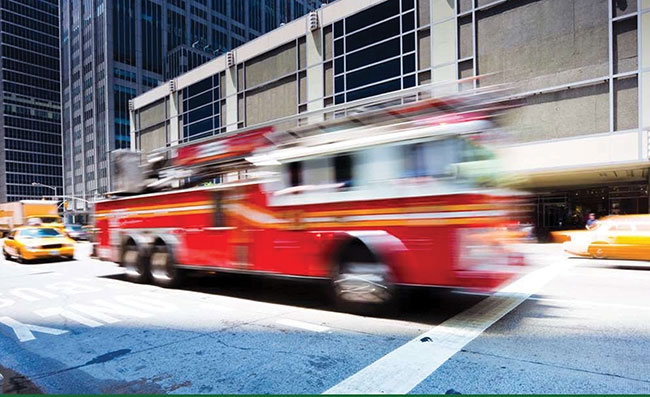
Features
Stop Bad: Get there safely, 100 per cent of the time
August 16, 2023
By Gord Schreiner
 New research has reinforced what the Canadian fire service already knows from experience
New research has reinforced what the Canadian fire service already knows from experienceFar too often, we hear stories of vehicle accidents involving firefighters responding to emergencies in fire apparatus or in their own vehicles. This is an area where we as an industry can do much better. I am not talking about the cases where others hit us. I am talking about the times we are driving too aggressively and not driving defensively enough. We need to make sure that every time we drive, we get there safely!
We need to drive like our family is with us — because they are (if not your immediate family, you probably have your fire family with you). If you are driving alone, your family (both immediate and fire) will certainly be impacted if you have an accident. We know that providing quick service can have a positive impact on the outcome of an emergency. This quickness should not, in any way, compromise the safety of our firefighters, citizens or ourselves. Train your firefighters on how to improve response times without increasing driving speed and compromising safety.
A typical response can be broken down as follows: Preparation at home or work (volunteer); responding to the fire station (volunteer); getting your personal protective equipment on in the fire station; responding in the fire apparatus, and doing all the things right once you arrive at the scene.
- Preparation at home or work: Significant time can be saved at home or work by ensuring you are ready to respond to an incident. These preparations can assist in saving time: have appropriate clothing ready, place your vehicle keys in the same spot all of the time, keep your pager close at hand so you hear the call, back your vehicle into your driveway, and keep your vehicle ready in cold weather (heater, cover windshield, garage). When these things are not done, an individual, and collectively our team response time is greatly increased. A firefighter can easily save one to two minutes just by getting out of their house or workplace quicker.
- Responding to the fire station in your vehicle: Drive carefully. You are no good to us if you have an accident on the way to a call. In fact, you could greatly impact our ability to deliver important services to our customers because you will not arrive at the station, and we may have to respond to assist you. Knowing the best driving route to the station at certain times of the day is one way to get there quicker. Speeding to the station is not only illegal but it is very dangerous.
- Getting your personal protective equipment on in the fire station: Significant time can be saved once you’re in the fire station. You can save time here by ensuring you have put your PPE away properly and that you have all your PPE ready to use. Save additional time by ensuring that you can quickly don your PPE. Further time can be saved by getting on the appropriate response vehicle safely and securing your seat belt and equipment. A firefighter can easily save one to two minutes by getting their PPE on quickly.
- Responding in the fire apparatus: Safe and defensive driving is the only way to go. One hundred per cent of the time we must get there safely. Know where you are going and plan your route to save time. Do not drive aggressively. It has been proven that little time is saved by speeding. Also proven, is that speed increases your risk of having an accident. A firefighter can easily save one to two minutes just by knowing where they are going and planning the best route to get there.
- Doing all the things right once you arrive at the scene: This is where significant time can be saved. If we are able to quickly, properly and effectively perform the many important tasks required, we will be much more efficient. This is where our training really kicks in. How quickly can you don your SCBA, pull a pre-connect or throw up a ladder to rescue a young child? All these skills need to be practiced and practiced again. One stumble here can really cost us a lot of time and maybe even a life. However, if all goes smoothly, lives can be saved. A firefighter can easily save two minutes by ensuring they are well trained.
When you add this all up, we can save between four to eight minutes of response time without speeding or driving aggressively and we can do so without increasing risk to ourselves or others.
Gord Schreiner joined the fire service in 1975 and is a full-time fire chief in Comox, B.C., where he also manages the Comox Fire Training Centre. He has delivered countless presentations in fire stations all over Canada and is available to assist your department in many areas. Contact Gord at firehall@comox.ca.
Print this page
Advertisement
- Winnipeg Fire Paramedic Service offers youth skills training
- Northwest Territories declares state of emergency